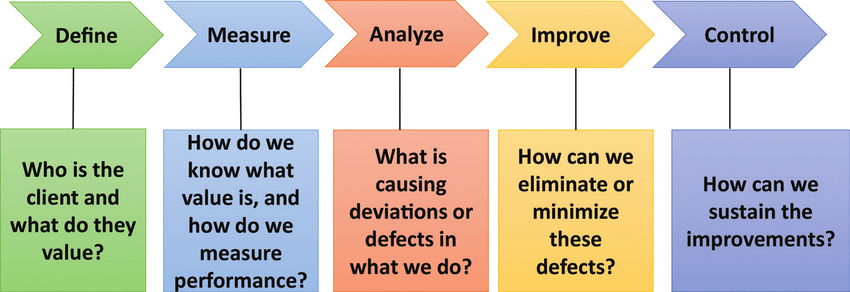There is no such thing as perfect, but that doesn’t mean you shouldn’t strive for incremental improvements.
That’s what continuous improvement is all about.
It’s understanding that there is always room to better a process or structure and taking defined steps to recognize where improvements can be made and implementing and measuring these changes.
The good news? Though these changes might be incremental, the financial gains can be massive.
As the name ‘continuous improvement’ indicates, this is done on a recurring basis. Continuous improvement is a tenet of multiple streams of thought for business optimization, but the overall theme is that you are mapping processes, identifying where optimization can occur, deciding on and implementing a change, measuring the outcome.
For example, in Lean Six Sigma this process is defined as:
Define > Measure > Analyze > Improve > Control

An alternative way of framing this process is:
Identify > Plan > Test > Deploy > Tweak
The approach you take to this process can fall into one of two categories. You are either making ‘incremental’ or ‘breakthrough’ improvements. Incremental improvements are those that are small corrections to existing processes, without the requirement that you take a deep dive into the entire process.
You are not looking to overhaul something that exists, just make little tweaks. While these changes are quick, easy, and oftentimes cheap to implement, there will always be a situation where tearing down and building from the ground up is a necessary approach.
That brings us to ‘breakthrough’ continuous improvement. These are bigger revisions that will most likely require the input and buy-in from your entire team. You are mapping out an entire process and making significant changes to achieve improvements worth the disruption these changes will make.
Continuous improvement isn’t just something that flows top down in a company; it’s a culture.
The only way your company is going to apply continuous improvement across all areas of your business and reap the maximum reward, is if everyone is thinking with this mindset. Think about it, while a manager or CEO of a company will have a macro understanding of how everything fits together, the incremental improvements are only going to happen when frontline workers who execute workflows are encouraged and empowered to identify problem areas, and are rewarded for putting their hand up and bringing attention to where improvements can be made.
The piece you need to have is a reliable way of mapping and measuring information. Microsoft Excel is an obvious playground to run the numbers on, but are you measuring the data inputs you need to determine if a change was successful? Qualitative data will only get you so far. Whether it is the number of support tickets completed in a quarter, or the revenue brought in per client, this information needs to be stored somewhere and you need the ability to retrieve it.
A repository for clearly mapping out processes so that everyone on your team is following changes is also important. Documenting standard operating procedures is vital. If one or more people on your team are still using the old process for a workflow, that is going to impact the numbers you’re looking at when you’re assessing whether an implemented change was successful.
This is an excerpt of an article that first appeared on IT Glue. Read the full story here – https://www.itglue.com/blog/business-strength/
Do you want to learn more about how to continuously improve your integration business?
Join Navigate Academy!
Solutions360 is a proud sponsor of Navigate Academy, the new online learning platform designed specifically for Systems Integrators and their technology partners.
Learn more HERE.

